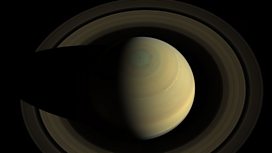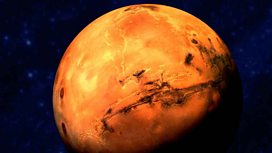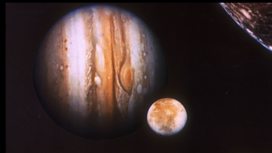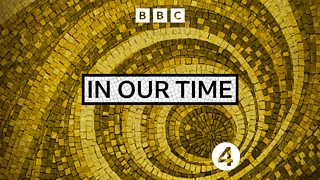Saturn
Melvyn Bragg and guests discuss Saturn, the most distant planet easily visible to the human eye, with over 60 moons and, with its rings, one of the most striking sights in space.
Melvyn Bragg and guests discuss the planet Saturn with its rings of ice and rock and over 60 moons. In 1610, Galileo used an early telescope to observe Saturn, one of the brightest points in the night sky, but could not make sense of what he saw: perhaps two large moons on either side. When he looked a few years later, those supposed moons had disappeared. It was another forty years before Dutch scientist Christiaan Huygens solved the mystery, realizing the moons were really a system of rings. Successive astronomers added more detail, with the greatest leaps forward in the last forty years. The Pioneer 11 spacecraft and two Voyager missions have flown by, sending back the first close-up images, and Cassini is still there, in orbit, confirming Saturn, with its rings and many moons, as one of the most intriguing and beautiful planets in our Solar System.
With
Carolin Crawford
Public Astronomer at the Institute of Astronomy and Fellow of Emmanuel College, University of Cambridge
Michele Dougherty
Professor of Space Physics at Imperial College London
And
Andrew Coates
Deputy Director in charge of the Solar System at the Mullard Space Science Laboratory at UCL.
Last on
More episodes
Previous
![]()
The Rings of Saturn
Tune in as the Cassini spacecraft crosses the icy rings of Saturn.
![]()
Mars
Melvyn Bragg discusses the planet Mars, a source of endless fascination in human history.
![]()
The Planets
Melvyn Bragg examines our knowledge of the planets in both our and other solar systems.
LINKS AND FURTHER READING
听
READING LIST:
Robert Brown, Jean-Pierre Lebreton and J. Hunter Waite (eds.), Titan from Cassini-Huygens (Springer, 2009)
Michele Dougherty, Larry Esposito and Stamatios Krimigis (eds.), Saturn from Cassini-Huygens (Springer, 2009)
T. Gehrels and M. Matthews, Saturn (University of Arizona Press, 1984)
Kenneth R Lang, The Cambridge Guide to the Solar System (Cambridge University Press, 2011)
Ralph Lorenz and Jacqueline Mitton, Titan Unveiled: Saturn鈥檚 Mysterious Moon Explored (Princeton University Press, 2008)
McGraw-Hill Yearbook of Science & Technology (McGraw-Hill, 2010), especially chapter on Enceladus by A. Coates
Michael Meltzer, The Cassini-Huygens Visit to Saturn: An Historic Mission to the Ringed Planet (Springer, 2015)
I. Muller-Wodarg, C. A. Griffith, E. Lellouch and T. E. Cravens (eds.), Titan: Interior, Surface, Atmosphere and Space Environment (Cambridge University Press, 2014)
Credits
| Role | Contributor |
|---|---|
| Presenter | Melvyn Bragg |
| Interviewed Guest | Carolin Crawford |
| Interviewed Guest | Michele Dougherty |
| Interviewed Guest | Andrew Coates |
Broadcasts
- Thu 14 Jan 2016 09:00大象传媒 Radio 4 FM
- Thu 14 Jan 2016 21:30大象传媒 Radio 4
Featured in...
![]()
Planets, Satellites and Asteroids
A collection of programmes relating to planets, satellites and asteroids.
![]()
20th Century—In Our Time
Browse the 20th Century era within the In Our Time archive.
![]()
Science—In Our Time
Scientific principles, theory, and the role of key figures in the advancement of science.
In Our Time podcasts
Download programmes from the huge In Our Time archive.
The In Our Time Listeners' Top 10
If you鈥檙e new to In Our Time, this is a good place to start.
Arts and Ideas podcast
Download the best of Radio 3's Free Thinking programme.
Podcast
-
![]()
In Our Time
Melvyn Bragg and guests discuss the ideas, people and events that have shaped our world.







